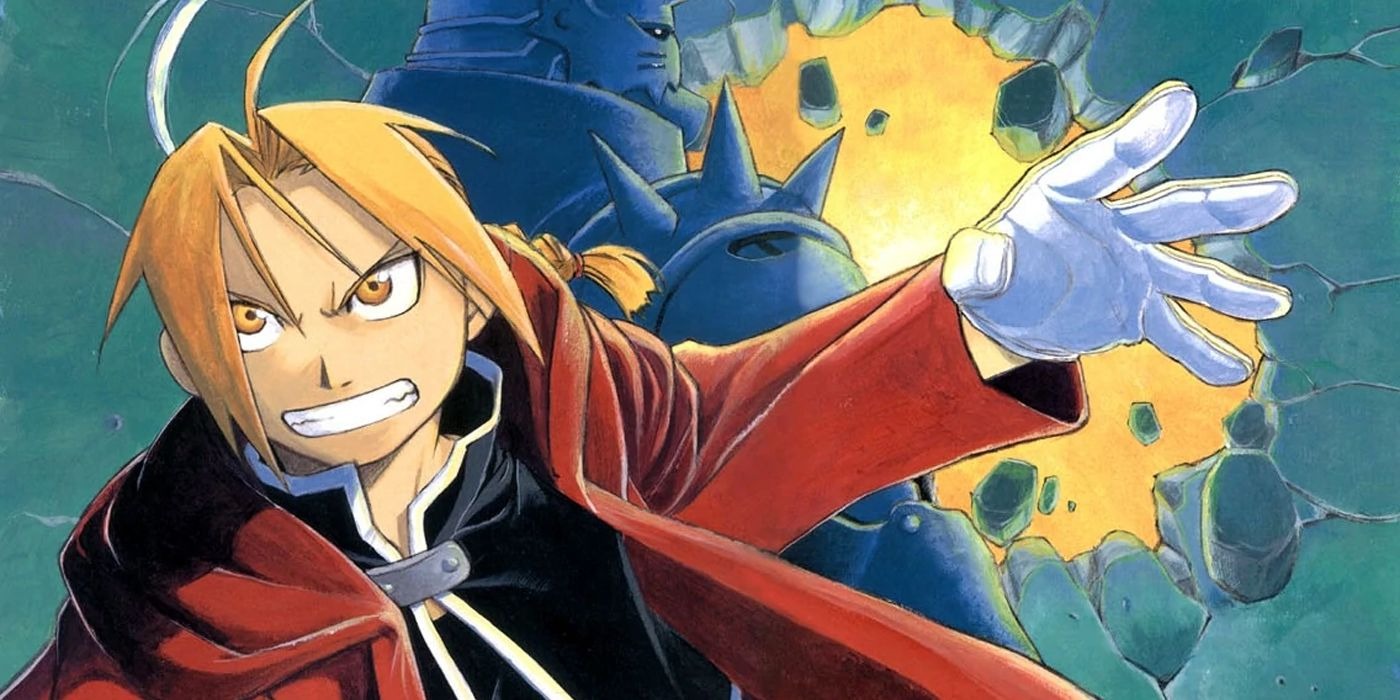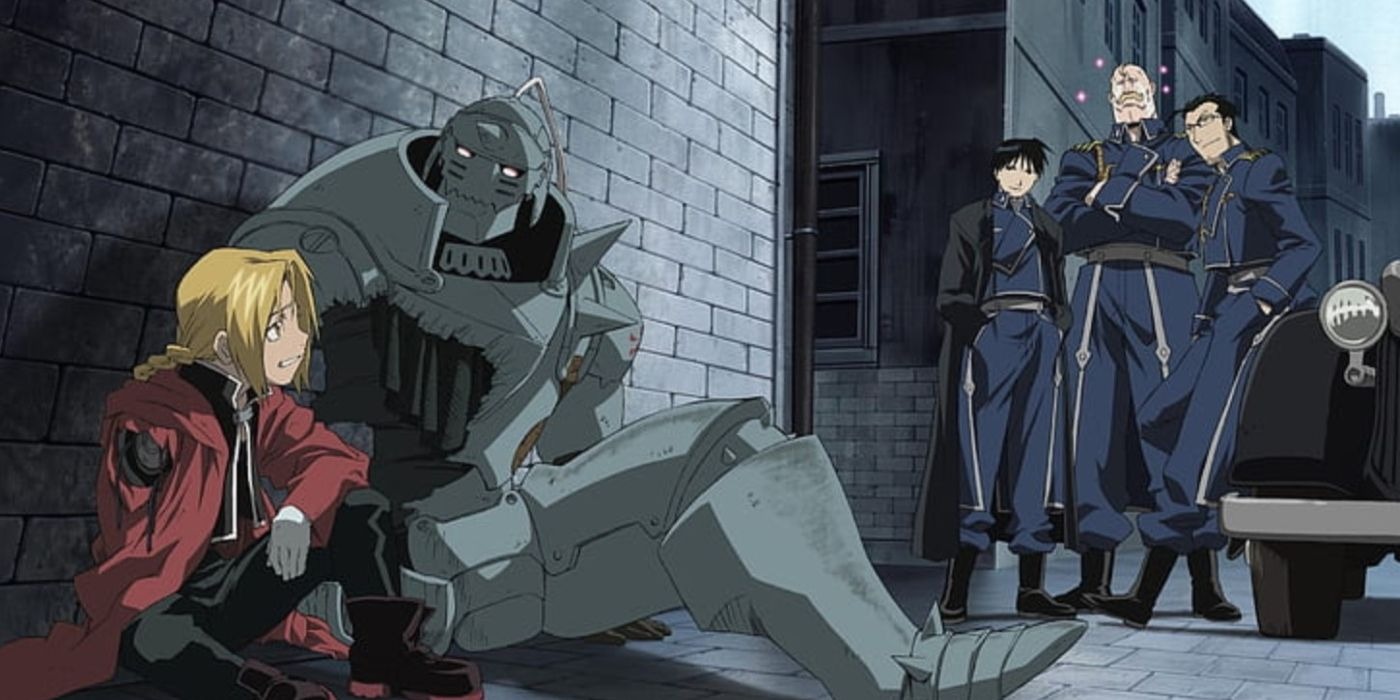Fullmetal Alchemist is widely regarded as one of the most influential anime and manga ever created, with its conclusion being dense and intricate, leading to some details getting overlooked in the middle of the influx of information.
The endings of both the Brotherhood anime and the manga differ slightly, making it somewhat challenging to fully grasp what happened, especially since the anime was being produced concurrently with the manga’s conclusion.

During the production of Fullmetal Alchemist: Brotherhood, the manga’s final chapter had not yet been published, which led to the anime relying on storyboards for the last chapter instead.
As a result, there are minor differences between the two versions, though they are so similar that the question of which version is “canon” is more a matter of personal preference for fans. Despite this, both versions provide satisfying conclusions, with the manga and anime ending the story in slightly different yet impactful ways.
How the Manga Concludes: Edward’s Ultimate Sacrifice for Alphonse
The opening of Chapter 108 sees Edward still fighting valiantly against Father. As a desperate last move, Father tries to seize Greed-Ling’s Philosopher’s Stone but succeeds only in ripping it out of Ling’s body, leaving him devoid of Greed.
However, Greed turns the tables by using his ultimate shield to attack Father, turning his body into graphite, a far weaker form than its original state. Edward seizes this opportunity, punching a hole through Father’s now frail chest and allowing the souls of Xerxes’ citizens to escape.
Father is then dragged into the realm of Truth, where he is told that he will be returned to the other side of the gate. Despite his protests, he cannot resist. As the story changes focus, Alphonse is still down due to his self-sacrifice to save Ed.
Both Ling and Hohenheim offer their Philosopher’s Stones to revive him, but Edward opts for a different solution. He performs a human transmutation and, in exchange, offers Truth the most precious thing he possesses: his ability to use Alchemy. Truth is pleased and grants him Alphonse’s real body.
In the result, Mustang’s team spreads a cover story, explaining that the highest-ranking officers had conducted a dangerous Alchemy experiment, which Mustang and Armstrong halted before it could harm anyone.
Mustang is then approached by Dr. Marcoh in a field hospital, who offers to restore his sight if Mustang agrees to help rebuild the Ishvalan nation. Mustang accepts, hoping to finally make amends for the suffering of the Ishvalan people.
Several other characters also find a resolution: Ling assures Lan Fan that he won’t punish other families when he becomes emperor, to Mei’s relief; Pinako finds Hohenheim at Trisha’s grave, where he has passed away; and Scar, recovering in a hospital, agrees to help restore Ishval.
Meanwhile, Ed and Al return home, with Al deciding to travel to Xing to learn Alkahestry. Edward and Winry confess their feelings for each other, marry, and eventually have two children.
How Fullmetal Alchemist: Brotherhood’s Ending Differs from the Manga
While Brotherhood largely follows the same key events as the manga’s ending, the differences appear in the finer details, with certain scenes playing out distinctly. For example, in Brotherhood, Roy Mustang takes the initiative to restore Ishval, rather than having the idea suggested by Marcoh, as seen in the manga.
Mustang agrees to have his sight restored but insists that Marcoh first use the Philosopher’s Stone to heal Havoc. In the manga, Havoc is still undergoing therapy in the final scenes, but in Brotherhood, he is already healed due to Mustang’s insistence.
Another difference appears in the epilogue: in the anime, Riza Hawkeye’s dog, Black Hayate, is shown to have had puppies, while in the manga, the dog’s picture is buried but still visible.

The manga’s final page features photos of the cast several years after the story concludes, with the family photo of Edward, Winry, and their children also including Al and Mei. The anime adds Paninya and Garfiel to the picture, suggesting they have maintained close ties with Winry over the years and implying a potential romantic development between Al and Mei.
Additionally, the manga shows two chimeras, Jerso and Zampano, learning Alchemy from Alphonse, intending to use it to restore their human forms, though they are still in the theoretical phase. Brotherhood, however, makes no mention of this, although the two characters still aim to return to their original forms.
Thematic Reflections on Fullmetal Alchemist’s Ending
The finale of Fullmetal Alchemist is heavily focused on the themes of sacrifice and power. While Father seeks to control everything and steals power wherever he can, Edward willingly gives up his ability to use Alchemy to bring Al back.
This contrast between selfishness and selflessness highlights the moral divide between hero and villain.
Edward’s declaration to Truth that he does not need such power because he has friends to rely on, is a powerful moment that Truth seems to approve of, underscoring the manga’s frequent emphasis on the strength of bonds and friendship.
Despite the differences between the manga and Brotherhood, both versions stay true to the core themes of the story, making them both highly satisfying. Fans who want a full experience might consider watching both versions to appreciate the subtle differences in the endings.
Fullmetal Alchemist, regardless of the medium, wraps up with a poignant and fitting conclusion that resonates with the themes of sacrifice, power, and camaraderie. Looking for your next movie night pick? Discover this title now on Amazon Prime.



